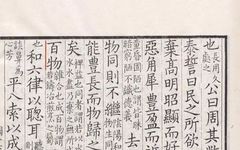In the world, both tangible and intangible things are associated with the theory of the Five Elements, which we refer to as Metal, Wood, Water, Fire, and Earth. With the Five Elements, there are naturally relationships of mutual generation and mutual restraint, allowing the world to develop and maintain balance. Do you know what the mnemonic for this is? This issue will take you to understand the mutual generation and restraint of the Five Elements.
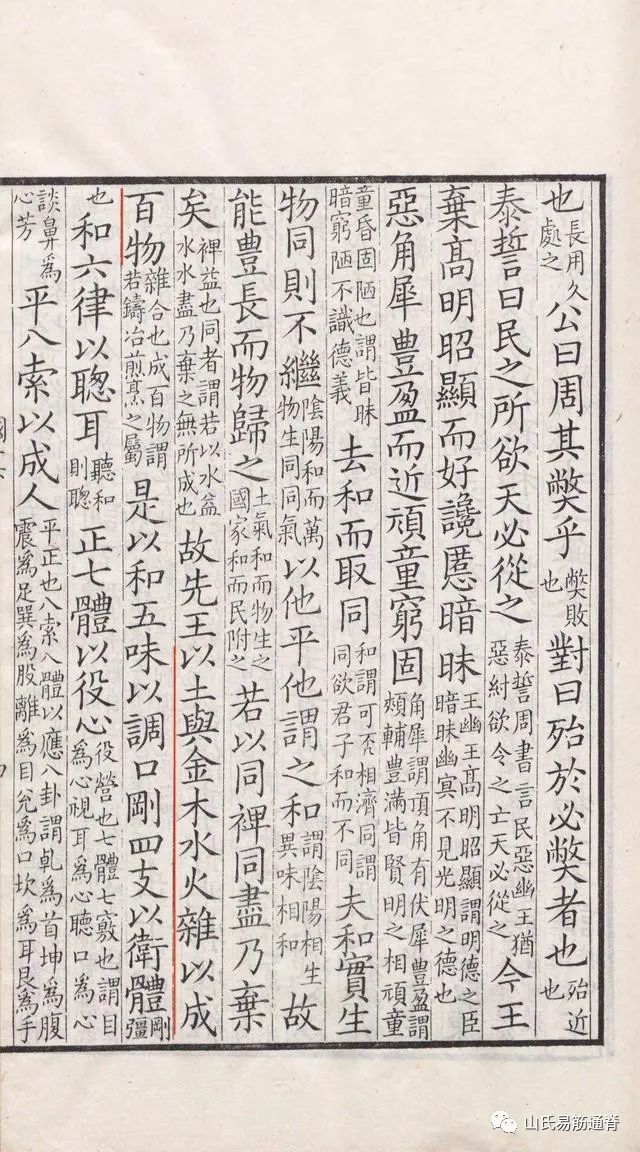 Mnemonic for the mutual generation and restraint of the Five ElementsMnemonic for the mutual generation and restraint of the Five ElementsMetal: When Metal is strong, it generates Fire, thus forming vessels.Metal can generate Water; when Water is abundant, Metal sinks; strong Metal requires Water to temper its sharpness.Metal can restrain Wood; when Wood is abundant, Metal is deficient; weak Wood encountering Metal will surely be cut down.Metal relies on Earth for its generation; when Earth is abundant, Metal is buried; Earth can generate Metal, and when Metal is abundant, Earth transforms.Fire: When Fire is strong, it generates Water, thus achieving mutual assistance.Fire can generate Earth; when Earth is abundant, Fire is dimmed; strong Fire requires Earth to extinguish its flames.Fire can restrain Metal; when Metal is abundant, Fire is extinguished; weak Metal encountering Fire will surely melt.Fire relies on Wood for its generation; when Wood is abundant, Fire blazes; Wood can generate Fire, and when Fire is abundant, Wood is burned.Water: When Water is strong, it generates Earth, thus forming pools and marshes.Water can generate Wood; when Wood is abundant, Water diminishes; strong Water requires Wood to release its force.Water can restrain Fire; when Fire is abundant, Water dries up; weak Fire encountering Water will surely not extinguish.Water relies on Metal for its generation; when Metal is abundant, Water becomes turbid; Metal can generate Water, and when Water is abundant, Metal sinks.Earth: When Earth is strong, it generates Water, thus allowing for drainage.Earth can generate Metal; when Metal is abundant, Earth transforms; strong Earth requires Metal to control its blockage.Earth can restrain Water; when Water is abundant, Earth flows; weak Water encountering Earth will surely be blocked.Earth relies on Fire for its generation; when Fire is abundant, Earth is scorched; Fire can generate Earth, and when Earth is abundant, Fire is dimmed.Wood: When Wood is strong, it generates Metal, thus forming beams.Wood can generate Fire; when Fire is abundant, Wood is burned; strong Wood requires Fire to transform its stubbornness.Wood can restrain Earth; when Earth is abundant, Wood is broken; weak Earth encountering Wood will surely collapse.Wood relies on Water for its generation; when Water is abundant, Wood floats; Water can generate Wood, and when Wood is abundant, Water diminishes.Nature of the Five ElementsWood represents benevolence; its nature is straightforward, its emotion is harmonious, its taste is sour, and its color is green. People with abundant Wood are often graceful, with long bones, delicate hands and feet, a sharp and beautiful mouth, and a complexion of pale green. They are compassionate and kind-hearted, generous and noble, simple and unpretentious. Those with weak Wood are often thin and tall, with sparse hair, narrow-mindedness, jealousy, and lack of kindness. Those with Wood energy completely depleted have misaligned eyebrows and eyes, long necks, dry muscles, and are often mean and stingy.Fire represents propriety; its nature is urgent, its emotion is respectful, its taste is bitter, and its color is red. People with abundant Fire have small heads and long feet, a narrow upper body and wide lower body, thick eyebrows and small ears, and a lively spirit. They are humble and respectful, simple yet impatient. Those with weak Fire are often yellow, thin, and sharp-tongued, prone to deceit and jealousy, and tend to start things without finishing them.Earth represents trust; its nature is heavy, its emotion is deep, its taste is sweet, and its color is yellow. People with abundant Earth have round waists and prominent noses, clear eyebrows, and a strong voice. They are loyal, filial, and sincere, with a broad mind, and their words are always followed by actions. Excessive Earth can lead to rigidity and ignorance, while insufficient Earth can result in a dull complexion, flat face, and a tendency to be cruel and unreasonable.Metal represents righteousness; its nature is firm, its emotion is intense, its taste is spicy, and its color is white. People with abundant Metal have well-proportioned bodies, fair complexions, high eyebrows, deep-set eyes, and are healthy and clear-minded. They are resolute and decisive, generous with their wealth, and have a strong sense of honor. Excessive Metal can lead to bravery without strategy, greed, and lack of compassion. Insufficient Metal can result in a small stature, meanness, and a tendency towards indulgence and violence.Water represents wisdom; its nature is intelligent, its emotion is kind, its taste is salty, and its color is black. People with abundant Water have dark complexions and speak gently; they are thoughtful, resourceful, and knowledgeable. Excessive Water can lead to gossip and indulgence, while insufficient Water can result in short stature, unstable emotions, cowardice, and indecisiveness.
Mnemonic for the mutual generation and restraint of the Five ElementsMnemonic for the mutual generation and restraint of the Five ElementsMetal: When Metal is strong, it generates Fire, thus forming vessels.Metal can generate Water; when Water is abundant, Metal sinks; strong Metal requires Water to temper its sharpness.Metal can restrain Wood; when Wood is abundant, Metal is deficient; weak Wood encountering Metal will surely be cut down.Metal relies on Earth for its generation; when Earth is abundant, Metal is buried; Earth can generate Metal, and when Metal is abundant, Earth transforms.Fire: When Fire is strong, it generates Water, thus achieving mutual assistance.Fire can generate Earth; when Earth is abundant, Fire is dimmed; strong Fire requires Earth to extinguish its flames.Fire can restrain Metal; when Metal is abundant, Fire is extinguished; weak Metal encountering Fire will surely melt.Fire relies on Wood for its generation; when Wood is abundant, Fire blazes; Wood can generate Fire, and when Fire is abundant, Wood is burned.Water: When Water is strong, it generates Earth, thus forming pools and marshes.Water can generate Wood; when Wood is abundant, Water diminishes; strong Water requires Wood to release its force.Water can restrain Fire; when Fire is abundant, Water dries up; weak Fire encountering Water will surely not extinguish.Water relies on Metal for its generation; when Metal is abundant, Water becomes turbid; Metal can generate Water, and when Water is abundant, Metal sinks.Earth: When Earth is strong, it generates Water, thus allowing for drainage.Earth can generate Metal; when Metal is abundant, Earth transforms; strong Earth requires Metal to control its blockage.Earth can restrain Water; when Water is abundant, Earth flows; weak Water encountering Earth will surely be blocked.Earth relies on Fire for its generation; when Fire is abundant, Earth is scorched; Fire can generate Earth, and when Earth is abundant, Fire is dimmed.Wood: When Wood is strong, it generates Metal, thus forming beams.Wood can generate Fire; when Fire is abundant, Wood is burned; strong Wood requires Fire to transform its stubbornness.Wood can restrain Earth; when Earth is abundant, Wood is broken; weak Earth encountering Wood will surely collapse.Wood relies on Water for its generation; when Water is abundant, Wood floats; Water can generate Wood, and when Wood is abundant, Water diminishes.Nature of the Five ElementsWood represents benevolence; its nature is straightforward, its emotion is harmonious, its taste is sour, and its color is green. People with abundant Wood are often graceful, with long bones, delicate hands and feet, a sharp and beautiful mouth, and a complexion of pale green. They are compassionate and kind-hearted, generous and noble, simple and unpretentious. Those with weak Wood are often thin and tall, with sparse hair, narrow-mindedness, jealousy, and lack of kindness. Those with Wood energy completely depleted have misaligned eyebrows and eyes, long necks, dry muscles, and are often mean and stingy.Fire represents propriety; its nature is urgent, its emotion is respectful, its taste is bitter, and its color is red. People with abundant Fire have small heads and long feet, a narrow upper body and wide lower body, thick eyebrows and small ears, and a lively spirit. They are humble and respectful, simple yet impatient. Those with weak Fire are often yellow, thin, and sharp-tongued, prone to deceit and jealousy, and tend to start things without finishing them.Earth represents trust; its nature is heavy, its emotion is deep, its taste is sweet, and its color is yellow. People with abundant Earth have round waists and prominent noses, clear eyebrows, and a strong voice. They are loyal, filial, and sincere, with a broad mind, and their words are always followed by actions. Excessive Earth can lead to rigidity and ignorance, while insufficient Earth can result in a dull complexion, flat face, and a tendency to be cruel and unreasonable.Metal represents righteousness; its nature is firm, its emotion is intense, its taste is spicy, and its color is white. People with abundant Metal have well-proportioned bodies, fair complexions, high eyebrows, deep-set eyes, and are healthy and clear-minded. They are resolute and decisive, generous with their wealth, and have a strong sense of honor. Excessive Metal can lead to bravery without strategy, greed, and lack of compassion. Insufficient Metal can result in a small stature, meanness, and a tendency towards indulgence and violence.Water represents wisdom; its nature is intelligent, its emotion is kind, its taste is salty, and its color is black. People with abundant Water have dark complexions and speak gently; they are thoughtful, resourceful, and knowledgeable. Excessive Water can lead to gossip and indulgence, while insufficient Water can result in short stature, unstable emotions, cowardice, and indecisiveness.
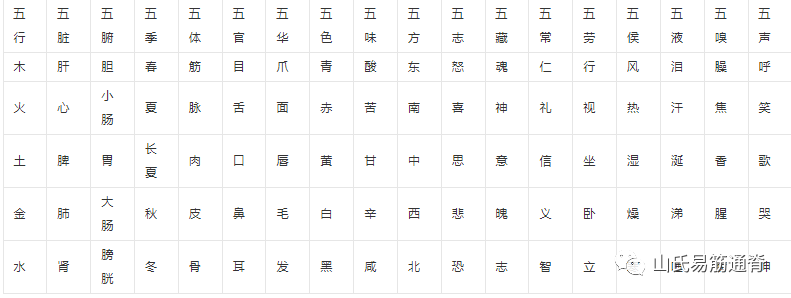
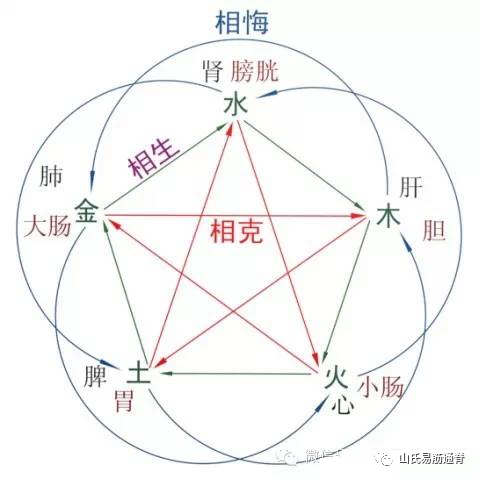
Liver and Gallbladder
East: Wood (Jia and Yi)
Opens to the eyes, governs tendons, its manifestation is in the nails, its emotion is anger, its taste is sour, and its color is green. When the Liver is harmonious, one can see black and white clearly. Diagnosis: Opens to the eyes. The Liver is closely related to the eyes; when the Liver is ill, it often affects vision. Liver deficiency can lead to blurred vision, night blindness, or tearing in the wind; Liver fire can cause red eyes. The Liver Wood governs the tendons, controlling the movement of all muscles and joints, and the tendons rely on Liver blood for nourishment. If Liver blood is insufficient, it cannot nourish the tendons, leading to tendon pain, numbness, and difficulty bending; if Wind evil damages the Liver Wood, it can also cause convulsions. “Nails are the excess of tendons” indicates a close relationship between the nails and the Liver. When Liver blood is sufficient, the nails are strong, bright, and red. If Liver blood is insufficient, the nails become soft, thin, lack luster, and may even deform or break. The emotion is anger. People with poor Liver function are often prone to anger. As the saying goes, “Liver fire is too strong.” The taste is sour and the color is green. People with poor liver function often prefer sour foods in their diet. Their complexion is usually pale green and lacks luster.
Gallbladder
is one of the six fu organs, and its main function is to store bile. Bile is a clear liquid, and the main manifestations of gallbladder disease include rib pain, jaundice, bitter mouth, and vomiting of bitter water. The Liver and Gallbladder are connected through meridians, forming an interior-exterior relationship, and they often affect each other when diseases occur.
Heart and Small Intestine
South: Fire (Bing and Ding)
Opens to the tongue, governs blood vessels, its manifestation is in the face, its emotion is joy, its taste is bitter, and its color is red. When the Heart is harmonious, one can discern the five flavors. Diagnosis: Opens to the tongue. The tongue is the sprout of the Heart; when the Heart functions normally, the tongue is red, flexible, and the sense of taste is sharp, and speech is fluent. When Heart Qi is insufficient and circulation is poor, the tongue appears purple and dull. When phlegm obstructs the Heart, the tongue may become stiff and speechless. Abnormal function of the Heart, which governs the spirit and consciousness, can lead to various symptoms such as palpitations, panic, forgetfulness, mania, excessive laughter, and even coma. The Heart governs blood vessels, and when Heart Qi is abundant, the complexion is rosy and radiant. When Heart Qi is insufficient and circulation is poor, the complexion may appear pale or bluish and lack luster. The emotion is joy, and it houses the spirit. The Heart governs mental activity, consciousness, and thought processes, akin to higher neurological functions. If the Heart’s function is normal, a person is spirited and clear-minded; if there are disturbances, various symptoms can arise, such as palpitations, panic, forgetfulness, mania, excessive laughter, and even coma. The taste is bitter and the color is red. People with poor heart function often prefer bitter foods in their diet; their complexion is usually overly red.
The Small Intestine
mainly receives food transported from the stomach, continues digestion, and separates the clear from the turbid. When the Small Intestine is ill, it not only affects digestion and absorption but also leads to abnormal urination. The Heart and Small Intestine are connected through meridians, forming an interior-exterior relationship. For example, when Heart fire is excessive, the tongue tip may appear red and painful, the mouth may have ulcers, and urination may be short and red, even leading to blood in the urine. This pathological phenomenon is called “Heart heat transferring to the Small Intestine.”
Spleen and Stomach
Center: Earth (Wu and Ji)
Opens to the mouth, governs muscles, its manifestation is in the lips, its emotion is thought, its taste is sweet, and its color is yellow. When the Spleen is harmonious, one can discern food and drink. Diagnosis: Opens to the mouth. When the Spleen can normally transform and transport the essence of food and drink, nourishing the whole body, appetite is strong. The Spleen governs muscles, and when the muscles are full and strong, the limbs are powerful, and the lips are rosy. When Spleen Qi is weak and transformation is abnormal, appetite diminishes, muscles waste away, limbs become weak, and the lips appear pale or withered and lack luster. The emotion is thought. People tend to overthink, and when faced with issues, they may become overly concerned, leading to excessive worry. The taste is sweet and the color is yellow. People with poor Spleen and Stomach function often prefer sweet foods in their diet; their complexion is usually yellow and lacks luster.
The Spleen and Stomach
are connected through meridians, forming an interior-exterior relationship. When the Stomach is ill, symptoms such as upper abdominal distension, pain, decreased appetite, nausea, and vomiting may occur. The Stomach is responsible for receiving food, while the Spleen is responsible for transformation, together completing the tasks of digestion, absorption, and transportation of nutrients. The role of the Spleen and Stomach is of utmost importance in the human body, hence the saying “the Spleen is the foundation of postnatal life.”
Lung and Large Intestine
West: Metal (Geng and Xin)
Opens to the nose, governs skin and hair, its manifestation is in the hair, its emotion is worry, its taste is spicy, and its color is white. When the Lung is harmonious, one can discern scents. Diagnosis: Opens to the nose. The nose is connected to the Lung and is the gateway to breathing. When the Lung is ill, it often manifests as nasal congestion, runny nose, difficulty breathing, or even flaring of the nostrils. The Lung is also related to voice; when Lung Qi is sufficient, the voice is loud, while when Lung Qi is weak, the voice is soft. When Wind and Cold invade the Lung, causing Lung Qi obstruction, the voice may become hoarse. Lung tuberculosis can arise from damage by pathogenic evils or excessive consumption of Lung Qi, leading to loss of voice. The Lung governs skin and hair, and its manifestation is in the hair. When Lung and Stomach Qi are abundant, the skin is moist, and the ability to resist external evils is strong; conversely, if the pores are loose, one is easily invaded by external evils, leading to spontaneous sweating, night sweats, and susceptibility to colds. The emotion is worry. When Lung function is weak, it is easy to generate feelings of sadness and worry. The character Lin Daiyu from the famous novel “Dream of the Red Chamber” is a typical representation of such emotions. The taste is spicy and the color is white. People with poor Lung function often prefer spicy foods in their diet; their complexion is usually pale and lacks luster.
The Large Intestine
mainly functions to produce and excrete waste. When the Large Intestine is ill, it can affect bowel movements, leading to constipation, abdominal pain, diarrhea, or dysentery with pus and blood. The Lung and Large Intestine are connected through meridians, forming an interior-exterior relationship. When Lung Qi is deficient, the Large Intestine functions normally, and bowel movements are smooth. If the Large Intestine is obstructed, it can also affect Lung Qi.
Kidney and Bladder
North: Water (Ren and Gui)
Opens to the ears, governs bones, its manifestation is in the hair, its emotion is fear, its taste is salty, and its color is black. When the Kidney is harmonious, one can discern sounds. Diagnosis: Opens to the ears (also opens to the two lower orifices). When Kidney Qi is sufficient, hearing is normal; when Kidney Qi is weak, it can lead to tinnitus or deafness. The two lower orifices refer to the anus and urethra, which are the lower orifices of the Kidney. If Kidney function is poor, it can lead to urinary incontinence, or difficulty in urination, frequent urination, urgency, enuresis, or nocturia. Insufficient Kidney Yang can lead to constipation, and deficiency of the Mingmen fire can cause diarrhea before dawn, etc. Kidney Water governs bones, and its manifestation is in the hair. It produces bone marrow and connects to the brain. The Kidney stores essence, and essence produces marrow; the Kidney is also related to the brain. When Kidney essence is sufficient, bones, marrow, and brain are strong, limbs are agile, and energy is abundant, with clear hearing and vision. Insufficient Kidney essence often leads to slow movements, weak bones, anemia, dizziness, forgetfulness, and delayed intellectual development in children. Additionally, “teeth are the excess of bones” indicates that teeth are related to bones; when Kidney Qi is weak, teeth can become loose and fall out. The growth and loss of hair often reflect the abundance or deficiency of Kidney Qi. When Kidney Qi is abundant, hair is thick, black, and lustrous; when essence is deficient, hair becomes sparse, falls out, or turns gray and lacks luster. The emotion is fear. People with poor Kidney function are often timid, easily startled, and have poor psychological resilience. The taste is salty and the color is black. People with poor Kidney function often prefer salty foods, indicating a heavy taste. Their complexion is usually dark and lacks luster.
The Bladder
mainly functions to store and excrete urine. When the Bladder is ill, symptoms such as frequent urination, urgency, or painful urination may occur. The Kidney and Bladder are connected through meridians, forming an interior-exterior relationship. Dysfunction of the Bladder’s urination function is sometimes related to Kidney disease; for example, if Kidney deficiency cannot consolidate, it can lead to urinary incontinence or enuresis; if Kidney deficiency cannot transform, it can lead to urinary retention or difficulty in urination.
It is not enough to merely understand the symptoms of the five zang-fu organs; it is crucial to understand their relationships of mutual generation and restraint. Damage to one organ can harm another. In simple terms, this is akin to the saying “when the city gate catches fire, the fish in the moat suffer.” If a person overthinks, it damages the Spleen Earth, leading to poor appetite; due to the poor Spleen, it can harm (restrain) the Kidney Water, leading to fatigue; the Kidney Water can harm (restrain) the Heart Fire, leading to insufficient Heart Qi; the Heart Fire can harm (restrain) the Lung Metal, leading to weak Lung Metal; the Lung Metal can harm (restrain) the Liver Wood, leading to irritability and mood swings; the Liver Wood can further harm the Spleen Earth, creating a vicious cycle. The condition will surely worsen, which is the principle of “disharmony among the five zang organs.”
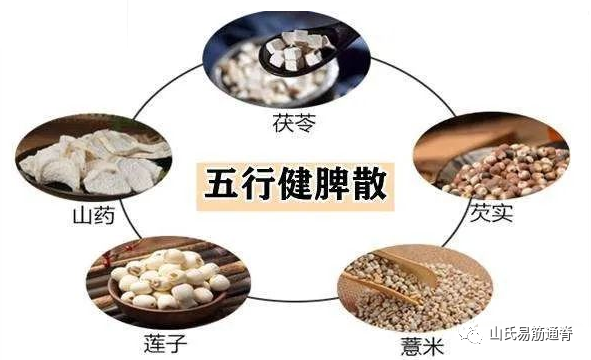
The Five Elements represent five dynamic balances of movement, rather than a specific element. Misunderstanding this concept leads to a cascade of errors.
As early as the Spring and Autumn period, the theory of the Five Elements was proposed, emphasizing the relationships of mutual victory (restraint) and mutual generation among Wood, Fire, Earth, Metal, and Water, establishing a cyclical order. This has fixed the order of victory (restraint) and generation, forming a model of contradiction and unity among things, reflecting the structural relationships within things and the thought of holistic understanding. It was during this period that the “Neijing” applied the Five Element theory to medicine, which played an important role in studying and organizing the vast clinical experiences accumulated by ancient people, forming a unique theoretical system of Traditional Chinese Medicine.
In the “Five Emperors” chapter, it is recorded: “…Heaven has five elements: Water, Fire, Metal, Wood, and Earth, which divide time and nurture to create all things. Their spirits are called the Five Emperors.”
The term “Five Elements” first appeared in the “Shangshu” in the “Gan Zhi” and “Hong Fan” sections. In “Gan Zhi,” it refers to “the Youhu clan threatening the Five Elements, neglecting the three justices, and Heaven punishing them.” In “Hong Fan,” it points out that “Gun caused the great flood, and the Five Elements were disturbed; the Emperor was furious and did not allow the Hong Fan’s nine categories… Gun was punished to death, and Yu succeeded, and Heaven granted Yu the Hong Fan’s nine categories, establishing the order of the Five Elements: first is Water, second is Fire, third is Wood, fourth is Metal, and fifth is Earth. Water moistens down, Fire blazes up, Wood bends and straightens, Metal transforms, and Earth cultivates crops. Moistening down produces saltiness, blazing up produces bitterness, bending and straightening produces sourness, transforming produces spiciness, and cultivating crops produces sweetness.” This presents the order of the Five Materials with Water as the first, along with their properties and functions, but it does not touch upon the internal connections among the Five Elements.
The formation of the Five Element theory may have multiple background thoughts. One is that during the era of the Five Emperors, the practice of the Five Elements began with Xi He, as evidenced by the publication of “The Youth Asks About Change” by the People’s Publishing House. Another is the numerological concept of directions that emerged in the late Shang Dynasty; many records about the “four directions” and “four soils” can be found in oracle bones, and the concept of the five directions (East, West, South, North, and Center) was formed in the late Shang Dynasty. This numerological concept of directions was likely completed during the Spring and Autumn and Warring States periods, as seen in “Mozi: On the Value of Righteousness,” which mentions time sequences and directions, and in “Liji: Qu Li Shang,” which states, “Walk in front of the Zhu Bird (sparrow) and behind the Xuanwu, to the left of the Qinglong and to the right of the White Tiger, with Zhao Yao above.” The “Records of the Grand Historian: Book of Celestial Officials” contains observations of seasonal celestial phenomena and directions. Another source is the gradually emerging “Five Materials Theory” since the late Western Zhou Dynasty, where the Five Elements originally stemmed from the Five Materials, which were derived from the Six Fu. In ancient times, there were six Fu (Wood, Fire, Earth, Metal, Water, and Grain) that governed affairs; after King You of Zhou abolished the Grain Fu, the Five Materials gradually formed. Both “Guoyu: Lu Yu” and “Zuo Zhuan: Year 32 of Duke Zhao” record that by the Spring and Autumn period, the Five Elements were basically established, with the heavens having the sun, moon, and stars, and the earth having the Five Elements.
The “Five Elements” concern the manifestation and continuous operation of nature. The so-called “movement” refers to the natural flow of Qi according to the inherent rules of its manifestation. Therefore, when Gun blocked the flood, the Emperor was furious because this was a violation of natural laws. The decree given to Yu was because Yu guided the water according to its nature; the nature of water is to flow, and blocking its flow is against its nature, which will surely provoke the wrath of Heaven and lead to human resentment. Thus, Xia Qi attacked the Youhu clan, believing that the punishment was “to respectfully carry out Heaven’s punishment, not to attack the left if you do not respect the command, and not to attack the right if you do not respect the command…”
In summary, we can clearly understand that the “Five Elements” signify the movement of all things; they represent the origin of all things. What the ancients expressed is essentially a thought: if one does not follow the “Five Elements,” they will end up like the Youhu clan and Gun, being abandoned by the decree of Heaven.
|
Pathogenesis |
Treatment |
|
Wood excess, Metal deficiency |
Tonify Water, drain Fire |
|
Fire excess, Water deficiency |
Tonify Wood, drain Earth |
|
Earth excess, Wood deficiency |
Tonify Fire, drain Metal |
|
Metal excess, Fire deficiency |
Tonify Earth, drain Water |
|
Water excess, Earth deficiency |
Tonify Metal, drain Wood |

